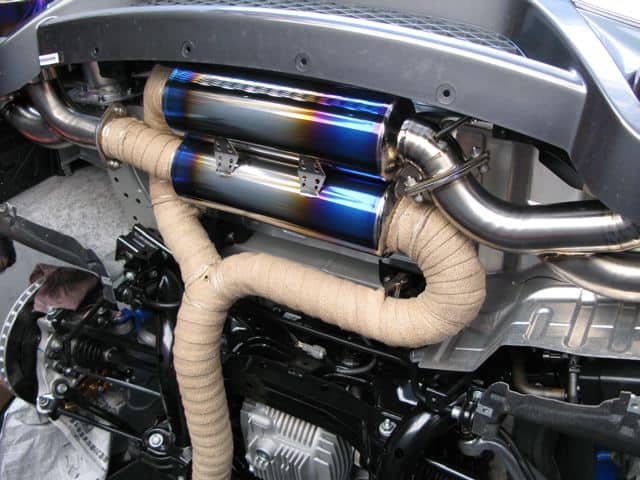When it comes to improving vehicle performance heat is the enemy, therefore it is essential to find ways of controlling the engine bay temperature. To get the most out of the engine it needs to be dragging in oxygen rich cold air which will enable the fuel to burn quicker.
One of the key catalysts of heat under the bonnet is the exhaust system. Therefore, if you can significantly insulate part of the exhaust system, this will allow the warm air to escape more efficiently out of the exhaust instead of being drawn into the engine bay, thus increasing the engine’s overall performance.
Before we look at the various methods available, it is worth discussing a popular myth surrounding the use of wraps. It is common knowledge that when metal is exposed to temperature its molecular structure changes, therefore many people will argue that using exhaust wraps will cause the exhaust to deteriorate prematurely. The facts are that the integrity of the exhaust metal lasts for about 20 years and the increased heat exposure due to the use of a wrap will reduce this to around 17 years perhaps less with a substandard exhaust. But this must be offset by the protection a wrap provides to the exhaust from moisture which is by far the greatest catalyst in metal erosion. By keeping the heat in the exhaust will certainly reduce moisture levels and thus erosion.
In terms of the options for lagging there are two types widely used that give significant results, which we shall discuss in more detail, thermal bandage and bonded ceramic coating. IF you are looking for a low cost option you could use a heat resistant paint and wrap with silver foil and you can find tips and experiences about this on our forum.
The first technique is simply a thermal bandage which is tightly wrapped and overlapped around the exhaust acting like a hot water tank jacket it insulates the exhaust encouraging the heat to be expelled. The second option is to apply a ceramic coating. Its application is via a fine spray at a very high temperature, it bakes hard to produce a neat, attractive powder finish. Much less unsightly than the thermal lagging it bonds to the surface of the exhaust, and as ceramic is an extremely poor conductor of heat, it is expelled through the exhaust pipe rather than radiating out into the engine compartment. However, to create a good bond the surface of the exhaust must be clean and in good condition otherwise the ceramic coating will flake thus compromising its ability to insulate the exhaust.
TorqueCars would recommend completely wrapping the headers and downpipe to the catalyst. In terms of effectiveness, ceramic wraps claim to reduce temperatures by 30-40% whilst thermal wraps can achieve anything up to 60%. If you combine both techniques it would not be unreasonable to achieve a 50% reduction.


